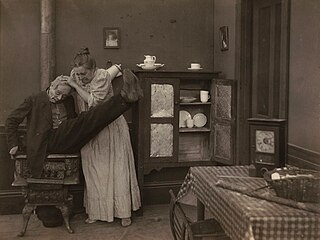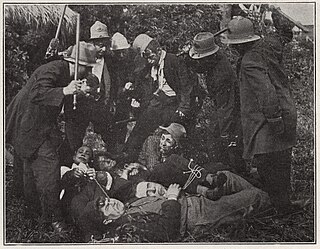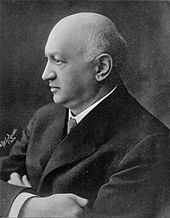
Florence Lawrence was a Canadian-American stage performer and film actress. She is often referred to as the "first movie star", and was long thought to be the first film actor to be named publicly until evidence published in 2019 indicated that the first named film star was French actor Max Linder. At the height of her fame in the 1910s, she was known as the "Biograph Girl" for work as one of the leading ladies in silent films from the Biograph Company. She appeared in almost 300 films for various motion picture companies throughout her career.

Siegmund Lubin was an American motion picture pioneer who founded the Lubin Manufacturing Company (1902–1917) of Philadelphia.

Romaine Fielding was an American actor, screenwriter, and silent film director known for his dramatic westerns. He was also known as Royal A. Blandin.

The Lubin Manufacturing Company was an American motion picture production company that produced silent films from 1896 to 1916. Lubin films were distributed with a Liberty Bell trademark.

Outwitting Dad is a lost 1914 American silent comedy film produced by the Lubin Manufacturing Company and featuring Billy Bowers, Raymond McKee, and Oliver Hardy in his first known screen appearance.

A Brewerytown Romance is a lost 1914 American silent comedy film produced by the Lubin Manufacturing Company, starring Eva Bell, Raymond McKee, Frank Griffin, and Oliver Hardy.

Long May It Wave is a lost 1914 American silent comedy film produced by the Lubin Manufacturing Company, featuring Raymond McKee, Mae Hotely, Marguerite Ne Moyer, Ed Lawrence, Ben Walker, and Oliver Hardy.

His Sudden Recovery is a lost 1914 American silent comedy film produced by the Lubin Manufacturing Company, featuring Oliver Hardy, Eloise Willard, Frances Ne Moyer, and Marguerite Ne Moyer.

Worms Will Turn is a lost 1914 American silent comedy film produced by the Lubin Manufacturing Company, featuring Raymond McKee, Julia Calhoun, Ed Lawrence, and Oliver Hardy.
The Rise of the Johnsons is a lost 1914 American silent comedy film produced by the Lubin Manufacturing Company, featuring John Edwards, Mattie Edwards, and Oliver Hardy.

He Wanted Work is a lost 1914 American silent comedy film produced by the Lubin Manufacturing Company, featuring John Edwards, Mattie Edwards, Billy Bowers, and Oliver Hardy.

Back to the Farm is a lost 1914 silent comedy short film that co-starred Oliver "Babe" Hardy and Herbert "Bert" Tracy. Written by Will Louis and produced by the Lubin Manufacturing Company of Pennsylvania, the short was filmed in Jacksonville, Florida. It was directed by Joseph Levering, likely in collaboration with the chief director on Lubin's production staff in Jacksonville, Arthur Hotaling.

West End Park was a baseball park in Houston from 1905 to the 1940s. It was the primary ballpark for the city when it was constructed, and the city's first venue for Negro Major League games. From 1909 through 1910 and again in 1915, it also served as the spring training facility of the St. Louis Browns as well as the 1914 New York Yankees of the American League and the 1906 through 1908 St. Louis Cardinals of the National League in Major League Baseball. After its use by its primary tenant, the Houston Buffaloes of the Texas League, the ballpark was sold to what is now known as the Houston Independent School District for its use until it was demolished.

The Vim Comedy Company was a short-lived movie studio in Jacksonville, Florida and New York City. Vim bought out Siegmund Lubin's Lubin Manufacturing Company Jacksonville, Florida facilities at 750 Riverside Avenue in 1915 after that company went bankrupt. It was founded by Louis Burstein and Mark Dintenfass. Vim specialized in two-reel comedies, producing hundreds of them in the short time it existed. Notable Vim actors were Oliver Hardy, Ethel Marie Burton, Walter Stull, Billy Ruge, Rosemary Theby, Billy Bletcher and his wife Arline Roberts, and Kate Price. At its peak Vim had a workforce of nearly 50 people. The Vim Comedy Company went out of business in 1917 after Oliver Hardy discovered that both Burstein and Dintenfass were stealing from the payroll. Vim was bought out by the King-Bee Films studio started by Burstein.
The Bold Bank Robbery is a 1904 short crime film produced and distributed by the Lubin Manufacturing Company. The silent film depicts a group of burglars who plan and execute a successful bank heist. Company employee Jack Frawley was the film's director, also coming up with the story and serving as cinematographer; the cast's identities are unknown. The silent film was the first Lubin Manufacturing Company release to feature an original narrative.

Kansas Saloon Smashers is a 1901 comedy short film produced and distributed by Edison Studios. Directed by Edwin S. Porter, it is a satire of American activist Carrie Nation. The film portrays Nation and her followers entering and destroying a saloon. After the bartender retaliates by spraying Nation with water, policemen order them out; the identities of the actors are not known. Inspiration for the film was provided by an editorial cartoon which appeared in the New York Evening Journal.
Hemlock Hoax, the Detective is an American short comedy film produced and distributed in 1910 by the Lubin Manufacturing Company. The silent film features a detective named Hemlock Hoax who tries to solve a murder, which unbeknownst to him is a practical joke being played on him by two young boys. It was one of many shorts designed to derive its humor from a sleuth whose name was similar to Sherlock Holmes.

Meet Me at the Fountain is a 1904 American silent short comedy film written, produced, and directed by Siegmund Lubin. Actors in the movie included Gilbert Sarony, a well-known cross-dressing performer. The film was inspired by Wallace McCutcheon's 1904 film Personal.

Jones and His New Neighbors is a 1909 American silent comedy film written by Frank E. Woods and directed by D. W. Griffith. Produced by the American Mutoscope and Biograph Company in New York City, the short stars John R. Cumpson, Florence Lawrence, and Anita Hendrie. It is one film in a series of 1908 and 1909 Biograph pictures in which Cumpson and Lawrence performed together as the married couple Mr. and Mrs. Jones. When this comedy was released in March 1909, it was distributed to theaters on a "split reel", which was a single projection reel that accommodated more than one motion picture. It shared its reel with another Biograph short directed by Griffith, the dramatic "thriller" The Medicine Bottle.

On the morning of June 13, 1914, a disastrous fire and a series of related explosions occurred in the main film vault of the Lubin Manufacturing Company in Philadelphia, Pennsylvania. Several possible causes for the blaze were cited at the time, one being "spontaneous combustion" of highly flammable nitrate film, which was the motion picture industry's standard medium for cameras throughout the silent era and for the first two decades of "talking pictures". Millions of feet of film were consumed in the flames, including most of the master negatives and initial prints of Lubin's pre-1914 catalog, several of the company's recently completed theatrical prints ready for release and distribution, a considerable number of films produced by other studios, inventories of raw and stock footage, hundreds of reels documenting historic events that occurred between 1897 and early 1914, as well as other films related to notable political and military figures, innovations in medical science, and professional athletic contests from that period. While this fire was not a decisive factor in Lubin's decline and bankruptcy by September 1916, costs associated with the disaster only added to the corporation's mounting debts, which led to the closure or sale of its remaining operations the following year.

















